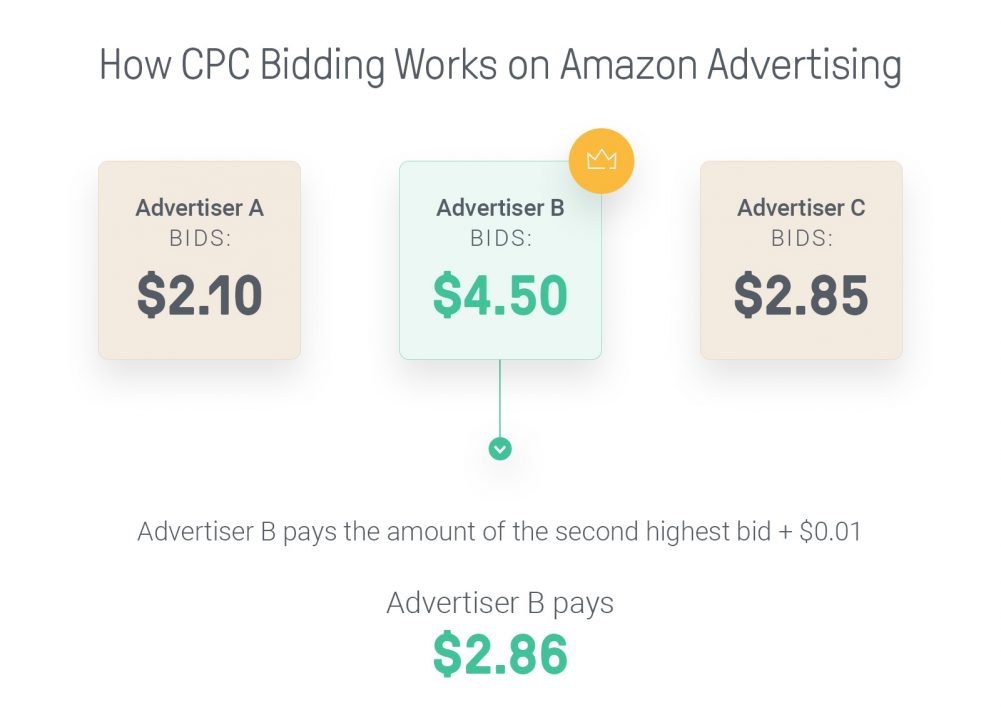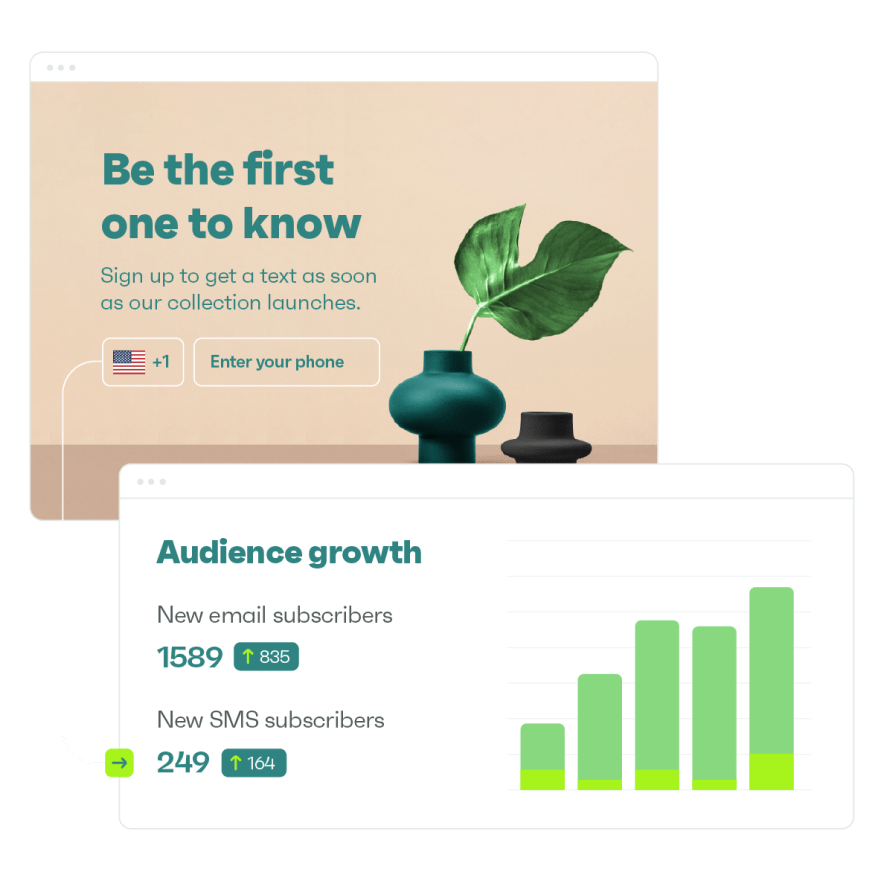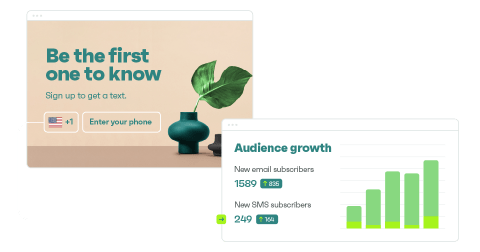Drive sales on autopilot with ecommerce-focused features
See FeaturesAmazon Sponsored Products Essentials: Everything You Need to Know to Get Started
Did you know that Amazon is the third-largest digital advertising platform in the US? Amazon Sponsored Products allows sellers to display their items prominently on the website, and with 197 million monthly users, it’s no surprise that advertisers are keen to get prime position (if you’ll excuse the pun).
Jeff Bezos, Amazon’s founder, had a vision of creating The Everything Store, a place where consumers could find every item they needed at the lowest price around. The company has been so successful in this mission that many shoppers begin their search on Amazon directly, rather than searching in Google and being sent to the retailer. The specific number varies by study, but it’s suggested that more than 60% of shoppers begin on Amazon.
Not only that, but visitors also don’t like to waste much time browsing; products displayed at the ‘top of search’ generate more sales and revenue than products displayed further down.
For sellers, this means a few important things:
- Having your products on Amazon gives you access to a huge pool of buyers
- An effective ad campaign can have a significant impact on your sales and revenue
- To be most effective, you need to be as visible as possible
In this article, we’ll explain everything you need to know about advertising on Amazon.
How Do You Advertise on Amazon?
There are three types of Amazon ads: Headline Search Ads, Amazon Product Ads, and Amazon Sponsored Products. Unlike search engines such as Google, Amazon’s advertising platform only shows products that can be purchased on the site.
Part of what makes Amazon ads so powerful is that your products are shown to people who have actively searched for what you’re selling. By definition, they are relevant and interested buyers, looking to make a purchase.
Let’s say that you sell iPhone cases. With Amazon Sponsored Products, you can appear in the results listings when visitors search “iPhones cases” and not try to appeal for people searching for “dog food.”
The Benefits of Amazon Sponsored Products
There are multiple benefits to advertising on Amazon, and a surprising one is a boost to your organic visibility. Amazon’s organic search results are partly influenced by total sales volume, which is why using Amazon Sponsored Products can help you sell more products even when your campaign ends. This can be especially worth considering if you’re launching a new product.
The other benefits of using Amazon paid search are:
- Visibility: you can appear in prominent places, where more people will see your products
- Higher sales: by reaching more people who are interested in your items, you’re more likely to increase your sales and revenue
- Cost control: as you set your own budget and only pay when someone clicks on the ad, you won’t have any surprise bills
- Increased growth of Amazon Standard Identification Numbers (ASINs): running Amazon ads for new or lesser-known products can generate more sales, which encourages Amazon to start displaying the ASINs organically, too.
How Advertising on Amazon Works
Amazon Sponsored Products are similar to an auction. As a seller, you bid on specific keywords, such as “iPhone case,” and you’re charged when a site visitor clicks on the advert. Because the ads are shown only to people searching for similar items, the ROI tends to be higher than other cost-per-click platforms.
Once a visitor has clicked on your ad, they are taken to your product detail page. From here, they can see more photos, read your description, customer reviews, and purchase the item.
The technical term for this type of ad is PPC, which stands for Pay-Per-Click. The big appeal is you pay for real traffic, and not for merely displaying the ad. Compare this to running an ad on television or in a magazine, where you pay for the display even if nobody ever sees it or contacts you.
The Amazon ad platform is both comprehensive and clever. The retailer is known for its powerful algorithms, showing you items it thinks you’ll like when you log in. This data can also be used when you advertise on Amazon.
When you create an Amazon ad campaign, you’re given two options for how to target people: automatic or manual.
With manual, you choose keywords you want to target, allowing you to get very granular with who sees your sponsored products. With automatic targeting, you let Amazon make the decisions for you. It looks at your ads, reviews your information, then creates keywords for you. We’ll look at both options, and how to choose which is most appropriate for you, further into this article.
How Much Do Amazon Sponsored Products Cost?
The good news is you have control over how much you spend on Amazon ads. As the ads are charged on a pay-per-click basis, you pay only when someone visits your product page after clicking an ad. And as an auction model, you select how much you’re prepared to pay for each click.
For example, if you tell Amazon that you’ll pay up to $5 for each click, that’s the most you would be charged. Your cap also tells Amazon where to place you in the list of ads, relative to other advertisers. If your cap is too low, their ads will always appear above yours, and they’re more likely to receive higher traffic and sales.
The auction works in the same way that bidding on eBay works: you tell eBay the maximum you’re prepared to spend, but the final price will depend on the second-highest bidder.
Let’s illustrate this with an example. You’re bidding on the latest pair of Air Jordan shoes on eBay, and someone else keeps placing bids too. You tell eBay your maximum price is $70. The other person tells eBay their maximum price is $60. You would win the auction, and pay slightly over $60—not the full $70 you set as a cap.

Amazon advertising works in the same way. You simply pay one cent more than the next highest bid. If you tell Amazon you’ll pay up to $5 per click, and a competitor says they’ll pay $6 per click, they’ll actually pay $5.01 to appear above you.
It will take some time to work out what the best pricing strategy is, and it’s essential to know how much you’re prepared to spend to acquire each new customer, but the great thing about Amazon ads is the control you have over your budget and spending.
How to Set Up an Amazon Ad Campaign
Amazon has a strong reputation for making things as simple as possible for buyers—from recommended products to one-click purchase—and it’s made life similarly easy to create an ad campaign too.
- Inside Amazon Seller Central, go to Campaign Manager and visit the Sponsored Products tab.
- Click the “Create campaign” button.
- Now it’s time to get specific: give your campaign a name and budget, and tell Amazon how long you want it to run.
- Select automatic or manual targeting.
- Let the magic happen.
Manual vs Automatic Targeting
Fundamentally, both are self-explanatory. With manual targeting, you choose your own keywords. With automatic targeting, you let Amazon do it for you. Neither one is necessarily better than the other, and we recommend you use a combination.
Let’s start with automatic targeting. The idea of relinquishing control probably fills you with fear or relief, and both emotions are understandable.
If you’re new to running PPC campaigns, or if you’re launching a new product, then the main benefits of automatic targeting are ease of setup and Amazon using its vast database to optimize your campaign. You’ll appear in search results for keywords that you wouldn’t have included manually, giving you greater reach and potentially greater sales.
Not only that, but Amazon collects data from the current campaign that you can also use in future campaigns. Clicks and spend are tracked, allowing you to easily see which of your campaigns are performing well and which need tweaking.
So what about manual targeting? If you want granular control and know exactly what keywords to use, manual is for you.
Before you rush in, though, there are a few things to consider. You bid on three types of keywords: broad, phrase, or exact. Research is essential to target the most profitable ones, especially as you’ll be competing against other sellers, and it’s important to let campaigns run for a while to monitor the results before making any adjustments. If you’re experienced with running campaigns you already know this, but if you’re new to it, manual targeting can cost you significant time and money while you learn.
Our recommendation is to use both types of targeting. Start with an automatic campaign and let Amazon work its magic on your behalf. Once you’ve got the data, start a manual campaign using the best keywords from the automatic campaign and increase the bids. This way, you know you’re targeting the best audience, and the increased bids enable you to appear above your competitors.
As a final tip, we also recommend that your Amazon ads include negative keywords. These are words and phrases that you don’t want your ads to appear for. So if you sell iPhone cases but not cases for other phones, your negative keywords could be “Samsung case” or simply “phone case.” Depending on your range, the negative keywords could also include specific sizes and colors.
Want even more Amazon Ad tips for the holidays? Check out our podcast with Mike Jackness of EcomCrew!
Key Terminology for Advertising on Amazon
Hopefully this article has shown that setting up Amazon sponsored product campaigns is simple, but also that there are some considerations to ensure you don’t lose a lot of time and money. To help flatten your learning curve, in this section we’ll introduce you to some important terminology for an Amazon ad campaign.
Adjust Bids by Placement
There isn’t a one-size-fits-all approach for bidding. Certain placements will require higher bids, so this feature allows you to modify bids to target specific areas, such as product detail pages or the top of search results.
Campaign types
This refers to the manual and automatic targeting options.
Dynamic bidding
You have the option of using fixed bids, or let Amazon adjust your bids up or down if the conversion probability indicates it should.
Keyword match types
There are three types of keyword match type: “broad,” “phrase,” and “exact.” You select how specific someone’s search needs to be for your ad to appear in the results.
Negative targeting
Whereas regular keywords determine when your adverts should appear, negative keywords tell Amazon when not to display your advert. This helps you control who sees your ads, and reduces the likelihood of less relevant shoppers clicking and increasing your costs. Negative targeting applies to both keywords and Amazon Standard Identification Numbers (ASINs).
TABLE OF CONTENTS
No fluff, no spam, no corporate filler. Just a friendly letter, twice a month.
What’s next




